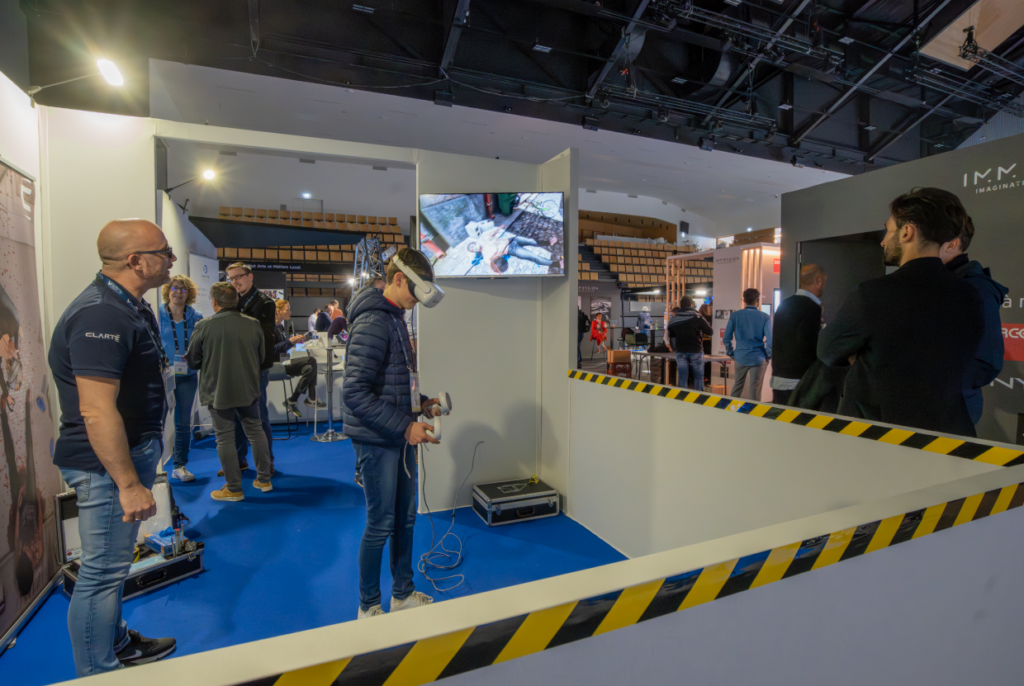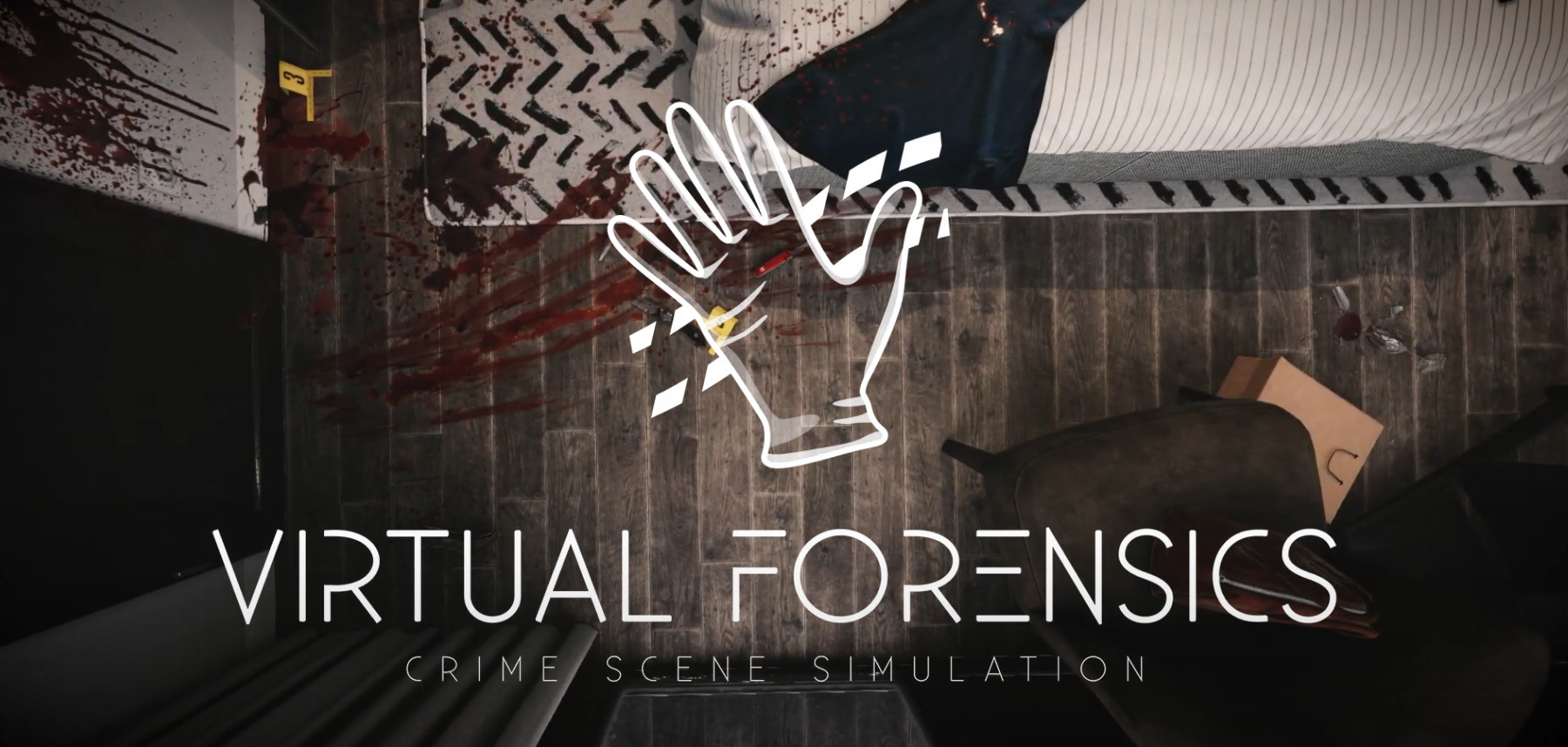This article is also available in:
![]() Français
Français
Training medical examiners is a daunting task. Most of the time, students have to rely on plastic dummies to learn procedures and get some experience. But this also means that once they are on a real crime scene, which is much more stressful, they can make mistakes.
This is why the CHU de Rouen (CHUs are French hospitals where doctors, paramedics are trained) asked CLARTE to help them. CLARTE is a “technology resource center specializing in Virtual Reality, Augmented Reality and Emerging Technologies” located near Laval, in France. The CHU de Rouen tasked them with creating VR simulations that would be more realistic than a plastic dummy.
Realistic crime scenes, in VR
Virtual Forensics is the end result of this project. This VR app allows student to immerse themselves in virtual crime scenes. They can take pictures, gather evidence, take measurements, check the temperature of the dead body to determine when the victim died, and so on. Once all of this is done, the student can create a report of their findings. They can check if they applied the standard procedure or if mistakes were made, but also check if they did find the true cause of death. Virtual Forensics is used as a self-evaluation tool. Teachers can also guide students as they practice, during a VR session. Virtual Forensics is therefore not use as a replacement of traditional classes, but as a way to complete them.

How to create a virtual crime scene
Let’s get behind the scenes. CLARTE explained us that they chose not to use haptic feedback devices for this tool. This would have increased the immersion, but it would also have increased costs. Furthermore, without haptics, the system used is less intrusive and more compact. At Laval Virtual 2023, Virtual Forensics demos were performed on a Meta Quest 2.
Creating the virtual crime scenes was done hand in hand with the CHU de Rouen. They sent CLARTE descriptions of the scenes they wanted, with specific scenarios, as well as reference pictures so that wounds would be realistic. This allowed CLARTE to create realistic elements (such as blood patterns): the end goal remains to teach the students, not to create a CSI: Crime Scene Investigation game that has little to do with real life fieldwork.
Before we conclude this article, we should also highlight that at Laval Virtual 2023, we met another company working on similar topics. Olfy (see our article for more information) is a French startup specialized in providing smells for VR experiences. One of their customers asked for help in order to train future medical examiners. The idea was to use smells reminiscent of dead bodies and chemicals used during autopsies in order to help students get used to these strong scents.
You can watch a trailer for Virtual Forensics below. It is available in two versions: censored and uncensored, depending on your sensitivity.
Here is the uncensored trailer. It will give you a better idea of what Virtual Forensics looks like, which means it also features virtual dead bodies.

